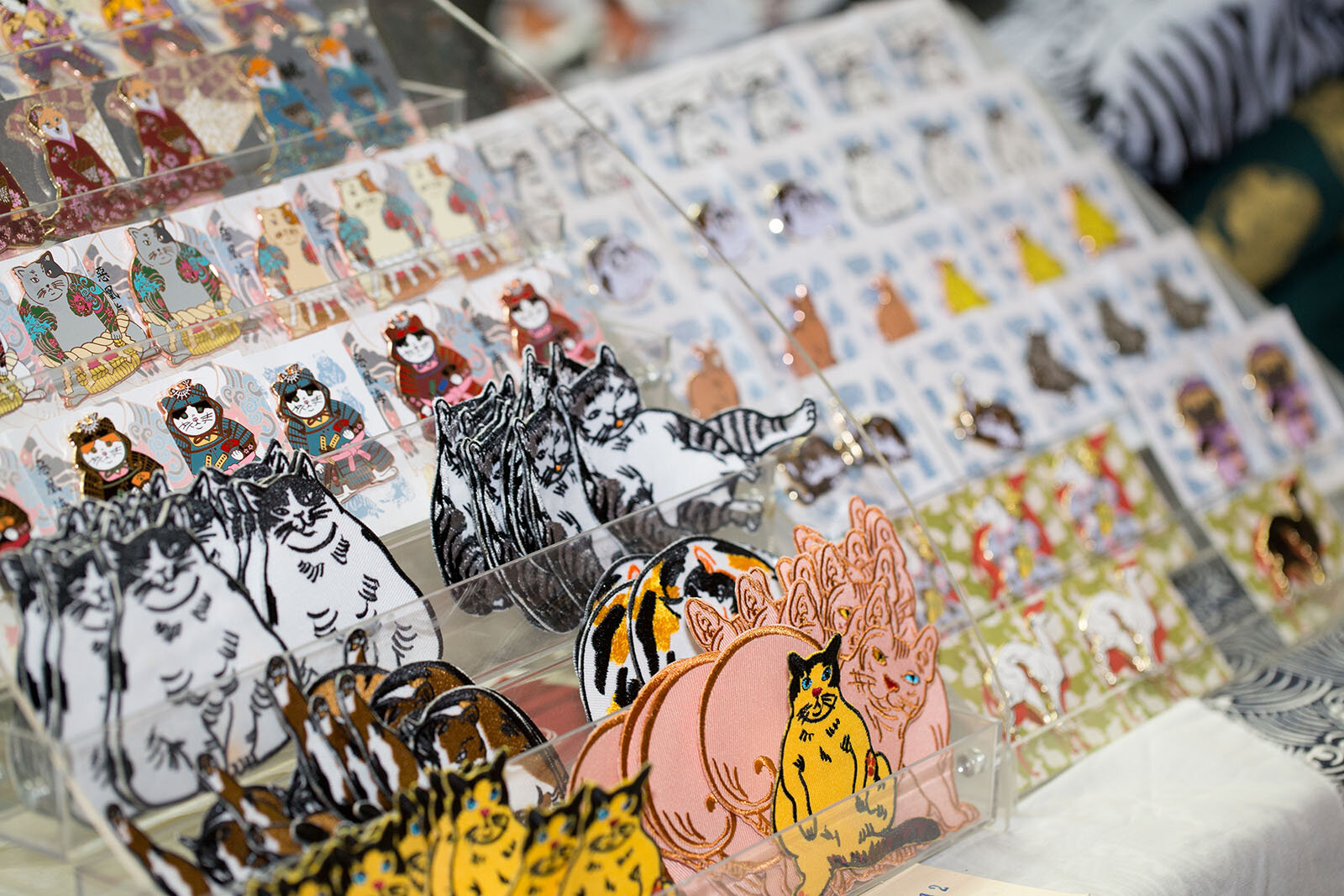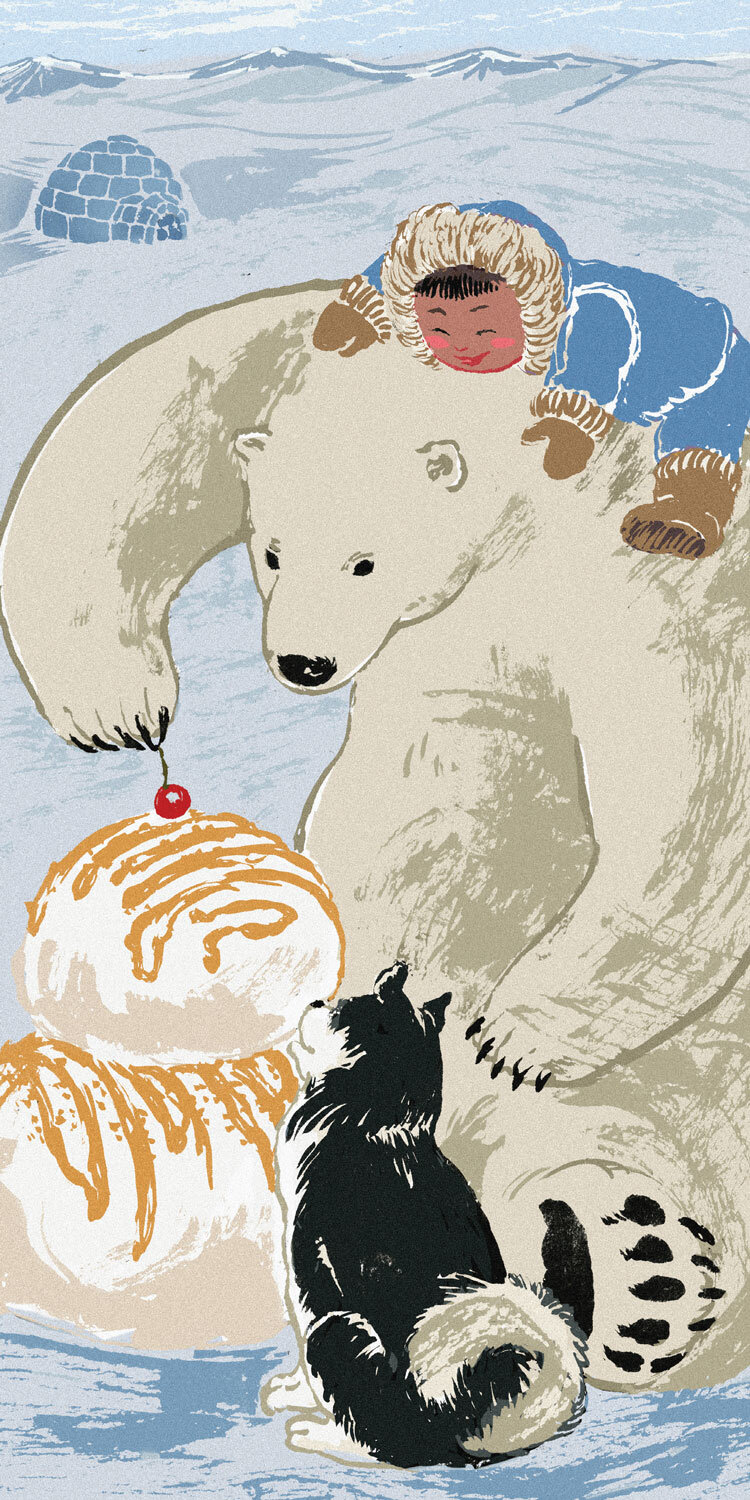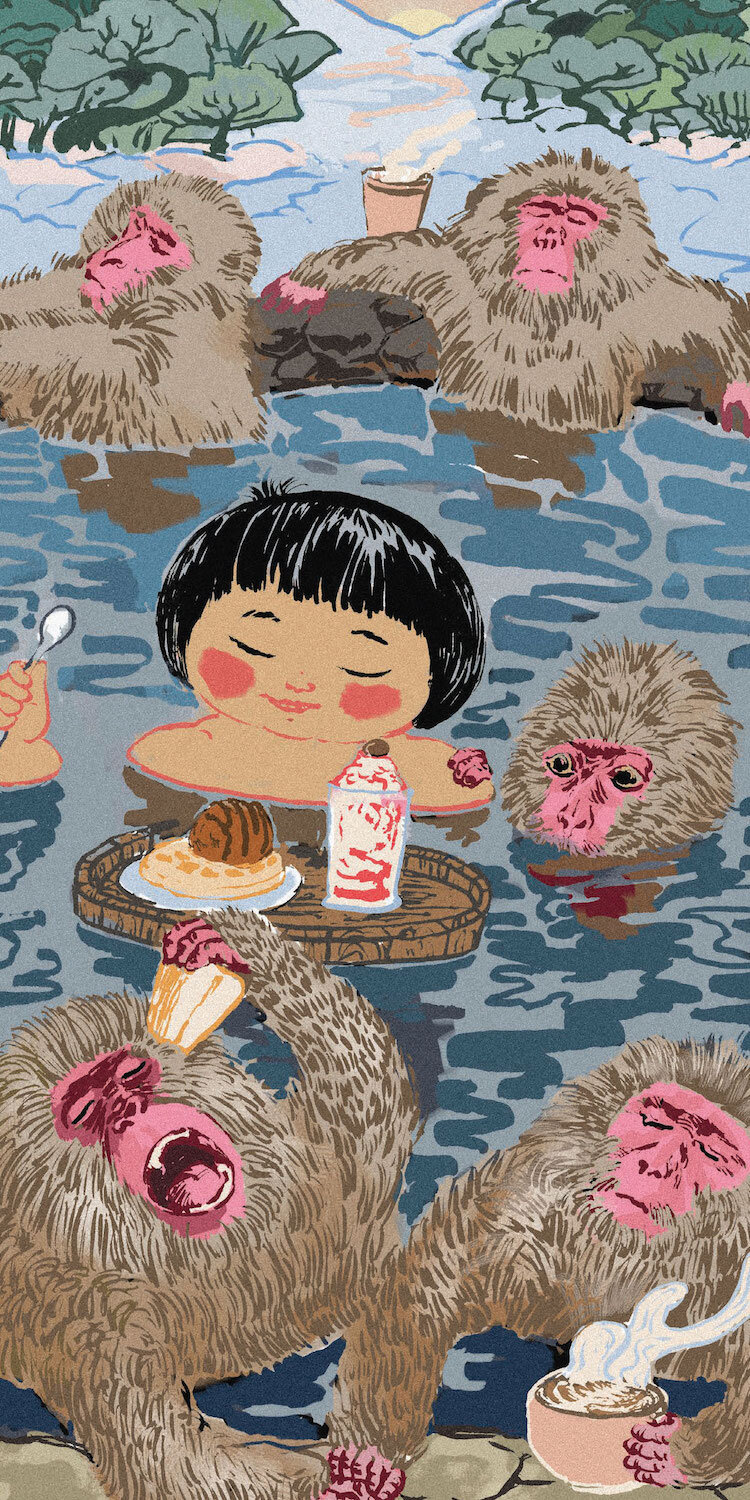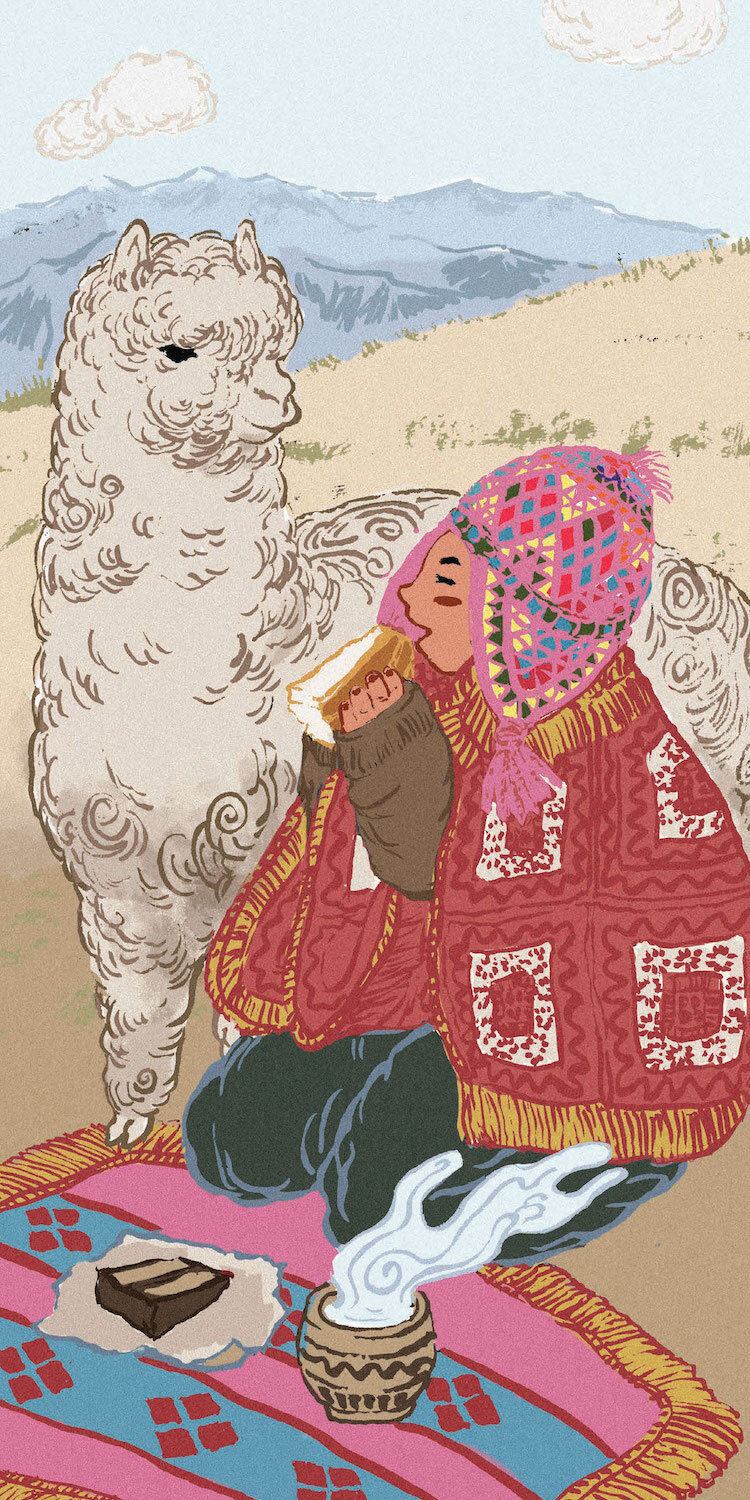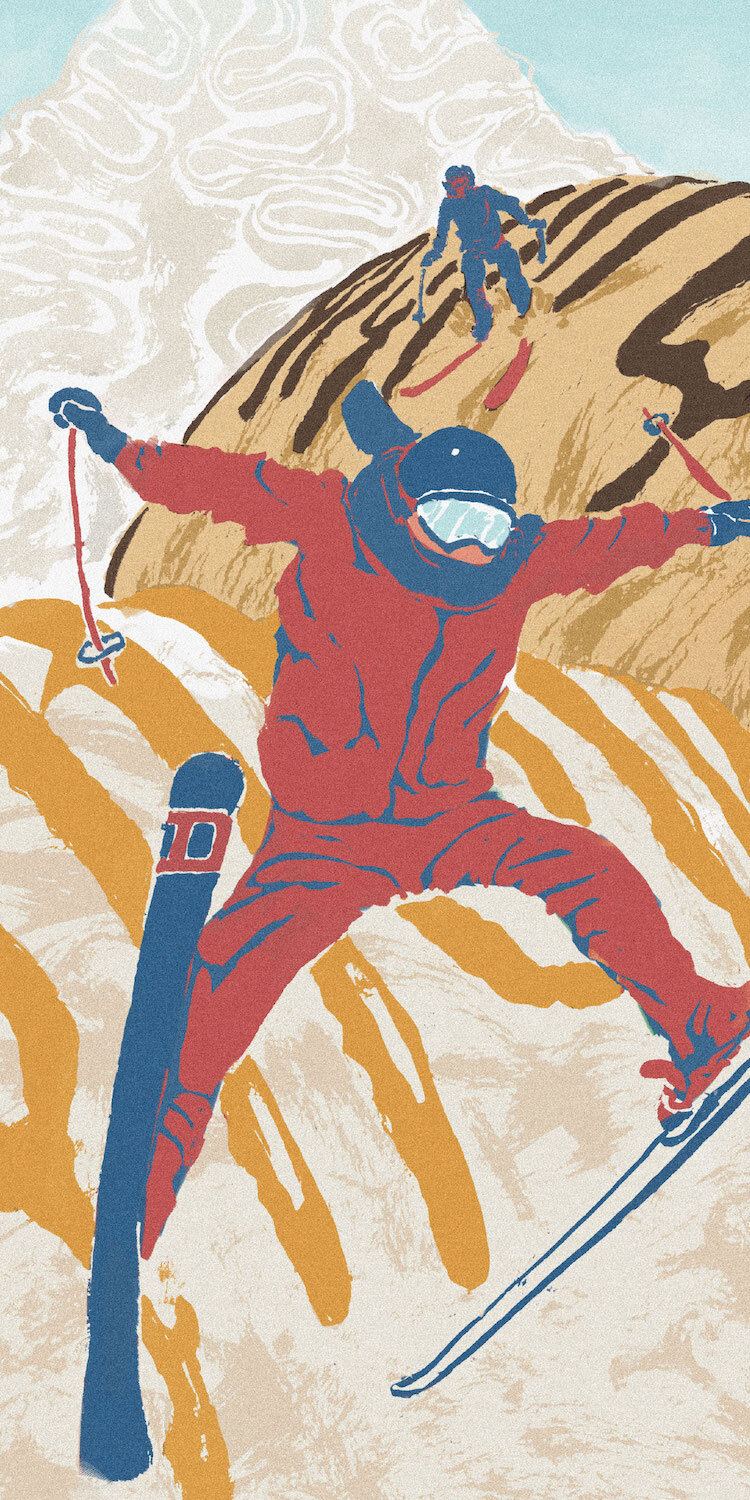Sustaiart • Winter 2017
Here at Demetres HQ, we’re always keeping our eyes open for local talent and Susitai Ulanbaagen, aka Sustaiart, popped onto our radar a few months ago while we were scouting artists for our winter menu. Hailing from Inner Mongolia, Susitai studied math before setting off on a winding road that finally led him to establish himself as a woodblock-print and illustration artist here in Toronto. His love of animals and fondness for traditional art techniques clearly shine through in his bold and richly textured work. We were lucky enough to sit down with him recently and chat about everything from how he developed our menu art, his current projects, and where he just likes to chill in Toronto.
Hi Susitai, tell us a little about yourself.
My name is Susitai and I’m from the Inner Mongolia of China. I didn’t actually start with art, I went to university in China for mathematics… very Chinese I guess you could say [laughter]. But my math is actually not very good at all. I guess that’s the thing about the education system there – you don’t actually know anything before you go to university because everyone is so focused on exams and getting higher marks, you don’t realize what you want to do and end up following what other people, like your parents and teachers or your friends, tell you to do. The system is very traditional there, so new career options like being an illustrator is not something that people support overall. There weren’t even any schools at the time that offered illustration as its own program.
So anyways, I ended up in a university in China where I studied math for two years and then I just couldn’t do it any more. I was the worst student in my year – literally. There was one time that I got zero on a math test – which apparently no one had achieved before [laughter]. So then I dropped out of that program and found another school near Beijing that offered a fundamental arts program that taught you how to draw, sculpt, 3D model, and basic Photoshop skills. However it was a pretty shitty school – I’m not even officially counted as a graduate there! It’s mainly because of how you can’t transfer schools in China, and I didn’t want to retake my university entrance exams so I still only had my high school diploma after going through their program for two years.
With only a high school diploma in China, it’s very difficult to find a job. I also wanted to continue pursuing art, so I had two choices: either get a part time job and pursue my art on the side, or start anew somewhere else. I went for the second option. My first choice for relocation was Japan, but I couldn’t get a Japanese visa… probably due to the perceived gap in my education since I was already 24 years old and only had a high school diploma. The immigration officials were probably very suspicious and thought that I was so weird [chuckles]. Canada was my second choice, since it’s got a reputation for being very welcoming to newcomers. I had to apply three times before I got through, probably also due to my education background. Then I applied to the illustration program at Sheridan, and it was the best education experience that I’ve ever had. That’s pretty much how I got started in this field.
Tell us a bit about the process you went through to develop our new menu art.
So it started with the idea of winter, and I just started brainstorming about everything to do with winter. Winter sports, animals, lifestyle, culture, etc. Since I’m an immigrant now and was also considered a minority back in China, I wanted to included different cultures in my art. Then I combined all these different ideas and narrowed them down to five images that reflect the Canadian culture and other international cultures.
Your woodcut prints and illustrations have a very distinct look to them, especially in the line work. How did you develop this style?
My art is shaped by my experiences. For example, I did Chinese watercolour and calligraphy when I was younger throughout elementary school, and you can see some of those influences in my illustration: the focus on black and white imagery, how the brushwork is done, etc. Japanese manga is also a big influence in my work. It’s also mainly done in black and white. I also really like print making, and in the older times when woodblock printing was being done, it was also done mostly in black and white. So all these influences are probably why I like to create illustrations in black and white.
What are your top three tools?
Well the first one has got to be this brush pen from Japan. It stays sharp, and it’s not even that expensive… somewhere between $10 – $20 I think. You can get really detailed line quality, very expressive thicker lines as well as dry brush effects, so you can pretty much do everything with this pen. This next pen is made in Germany, called Lammy (?). It’s a fountain pen, and both Tian and I love it so much that we fight over who gets to use it. So we got two of them. Even though I have used a variety of cutting tools, my favourite is this $10 Speedball cutter that I got in my first year at Sheridan. I’ve been using it for such a long time but it’s still in good shape, and its design is just super convenient for carrying around since you can store the blades inside the handle itself when not in use.
If you can collaborate with anyone, who would it be?
It would probably be an author. I’m really into making graphic novels right now, and I’ve got one in progress. But the thing with books is that it takes forever, and right now because it’s unpublished, I don’t have any money for working on this book specifically. So it’s pretty much my side assignment for myself when I’m not working. My problem is that I just get too ambitious and make the story too long, and it becomes hard to finish… Anyway, I would love to work with an author like Neil Gaiman, someone whose stories have a dark twist to them.
What’s your favourite project that you’ve worked on within the last few years?
Actually this one, because it’s the first illustration job that I did a woodcut for. I’ve always thought about how nice it would be to do that, but there has never been enough time. But there was a longer work time for this project so it was doable. I mean I still digitally coloured the images in this project, but all the fundamental elements were done traditionally. I also liked the amount of freedom I was given in this project.
Have you ever experience artist’s block, and if so, how did you overcome it?
All the time! Especially around this time of year when I do the One Of A Kind show, because I have to spend a lot of time printing shirts and preparing merchandise. Then obviously you can’t really do much during the show, and afterwards I’m just so exhausted. Some people can do their work by taking advantage of small fragments of time here and there, but I can’t do it. I need long consistent periods of time to work and sort things out. So when these dry spells happen, I just try to relax and go to a café or the Toronto Reference Library and just sketch people. Just going back to art, but not having to think a lot about making it.
What do you like to do when you’re not creating art?
Play video games.
What’s your favourite spot to visit or relax in and around the GTA?
I like Kensington Market. I used work out of a shared studio space there, called the White House. I also like Jimmy’s Coffee – their backyard is the best, especially in the summer, with the old motorbikes sitting around and lots of plants hanging over you. I also like Moonbean and Rasta Pasta.
What’s one piece of advice you would give to someone looking to go into illustration?
I would tell them that it’s hard, so they have to believe that they’re capable of making money doing this. A lot of people tend to wait for jobs to approach them, or wait for something good to happen to them. Maybe that’s because they don’t believe their work is valued very much so they’re scared to just put themselves out there. We experienced this ourselves until we started doing our own designs and merchandise (Susitai runs Horse Fiddle Press with his partner @tianyuart). There will still be people who put you down and look down on you for having to set up booths at small craft shows and selling your merch to make a living, but it’s actually quite fun. And now I’m more confident in my own abilities to go out and make money instead of waiting for jobs to come to me.











